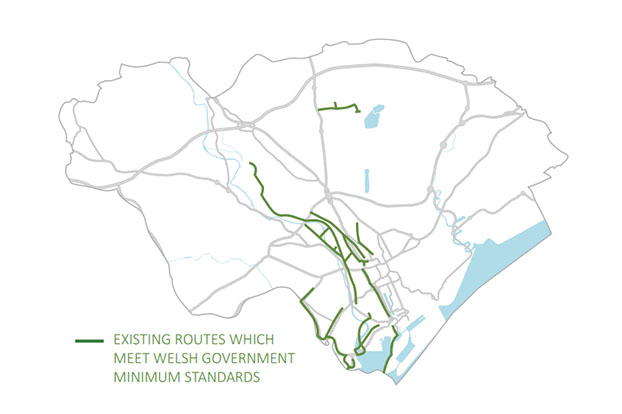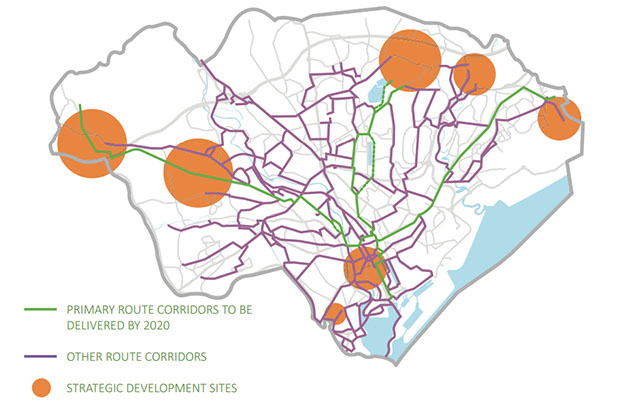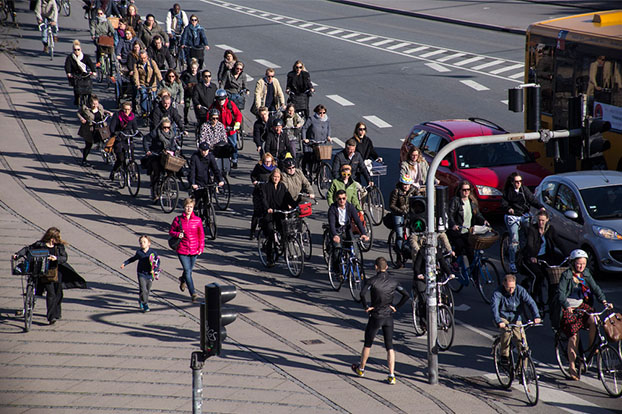The City Council recently set out its 10-year cycling vision in the new strategy and proposed steps to structure Cardiff into a more bicycle-friendly capital. Before the plan is put into action, the committee is now consulting the public.
Cardiff City Council is hosting three public drop-in sessions for every Cardiffian to express their views on the new cycling strategy report released last month.
The strategy took aspects of cycling, such as infrastructure and network, into account and developed initial plans to overcome challenges posed by shifting transport mode from motor vehicles to bicycles.
The council is looking for feedback from everyone to improve their proposal.
“For us all to make this happen it will require continued positive lobbying and awareness raising,” said Caro Wild, Labour Councillor for Riverside, “So there’s lots you can do to get involved, speak to people, join in with consultations and events.”
The first consultation session was held on Feb 7. The next will be held on Feb 23, 6pm-8pm, in City Hall Room C and the final one on March 11, 10.30am-3pm, in The Old Library and The Hayes.
The meetings have been promoted by the council and other groups via multiple channels, such as on Twitter.
Have your say on our cycling strategy at a series of public drop in sessions. Find out morehttps://t.co/WOmEtYTktn pic.twitter.com/WZBhvc2mea
— City of Cardiff (@cardiffcouncil) February 3, 2017
Cardiff Cycling Strategy open for public consultation! Add your views on 10-year cycling strategy by visiting the @cardiffcouncil website. pic.twitter.com/uSzlbamuux
— BikeWalkScoot (@BikeWalkScoot) February 2, 2017
Below is our take on five reasons why everyone should make time for this.
1. No one knows this better than you do.
“We want to work with the public to find out their priorities so we can deliver cycling routes which will be used,” said Cllr Ramesh Patel, Cabinet Member for Planning. As bicyclers, you know best where you want the new routes to lead you to. From the City Centre to the Bay and the new development sites to core spots, the council is outlining networks stretching across the city. This is a great opportunity to express your views on the new design to suit your convenience.


2. Pedestrians’ opinions matter too.
Your opinion is also valued, even if you don’t ride a bicycle.The council wants to hear pedestrians’ voices on building a more walker-friendly environment. Walking side-by-side with bicycles, occasionally when cyclists darted across the pavement, you may wish they’ve given the slightest sense of consideration to pedestrians’ safety. The consultations are opened for discussions about walking around Cardiff as well.
#Cardiff aiming to become leading #cycling city in 10 years. But please get them off pavement & shopping streets. https://t.co/E7BhtxVISq
— Wyn Emanuel (@WynfordE) January 20, 2017
3. The plan is going to be around for the next 10 years.
The council intends to double the number of cycling trips in Cardiff by 2026 to retain the position as one of the UK’s top cycling cities. The implementation of the proposal is going to significantly increase the use of bicycles and transform the travelling pattern in town in the coming decade. The change is quite likely to make a noticeable impact on our lives. Hence the better planned the networks are, the easier it is for us to get used to it when the plan is enacted.
On yer bike! Cardiff plans to become one of the UK’s leading cycling cities over the next 10 years ?https://t.co/RQQx0SoZUh pic.twitter.com/nJKBsPIer2
— Cardiff Uni Inter (@CardiffUniInter) January 25, 2017
4. The new strategy might bring about other traffic legislation changes.
Part of the strategy vision is “to develop Cardiff into a cycling city where cycling is a normal, practical and safe choice for short trips for people of all ages and abilities.” The strategy suggests possibilities of putting traffic segregation and speed monitoring in place where necessary, so that more vulnerable riders can be better protected. Drivers might want to be a part of this discussion to ensure their rights of using the road is at a good balance with the cyclists.

5. We are all in this together.
Now we are talking about changes in our very own city. “As a member of the city you should care about it,” said Jon Howes, workshop coordinator of Cycle Training in Wales, “Anyone who has a generic interest in transport development and safety should get involved in these meetings, not just cyclists.” Looking into the future, better utilisation of bicycles will help build a greener and healthier city. Especially with Cardiff’s population projected to boom in the next two decades. By replacing motor vehicles with bicycles as a major mode of transport, we can reduce carbon emission and get plenty of exercises from daily journeys altogether.
Comment on the strategy by responding to the online survey here.
The consultation will end on March 28.
